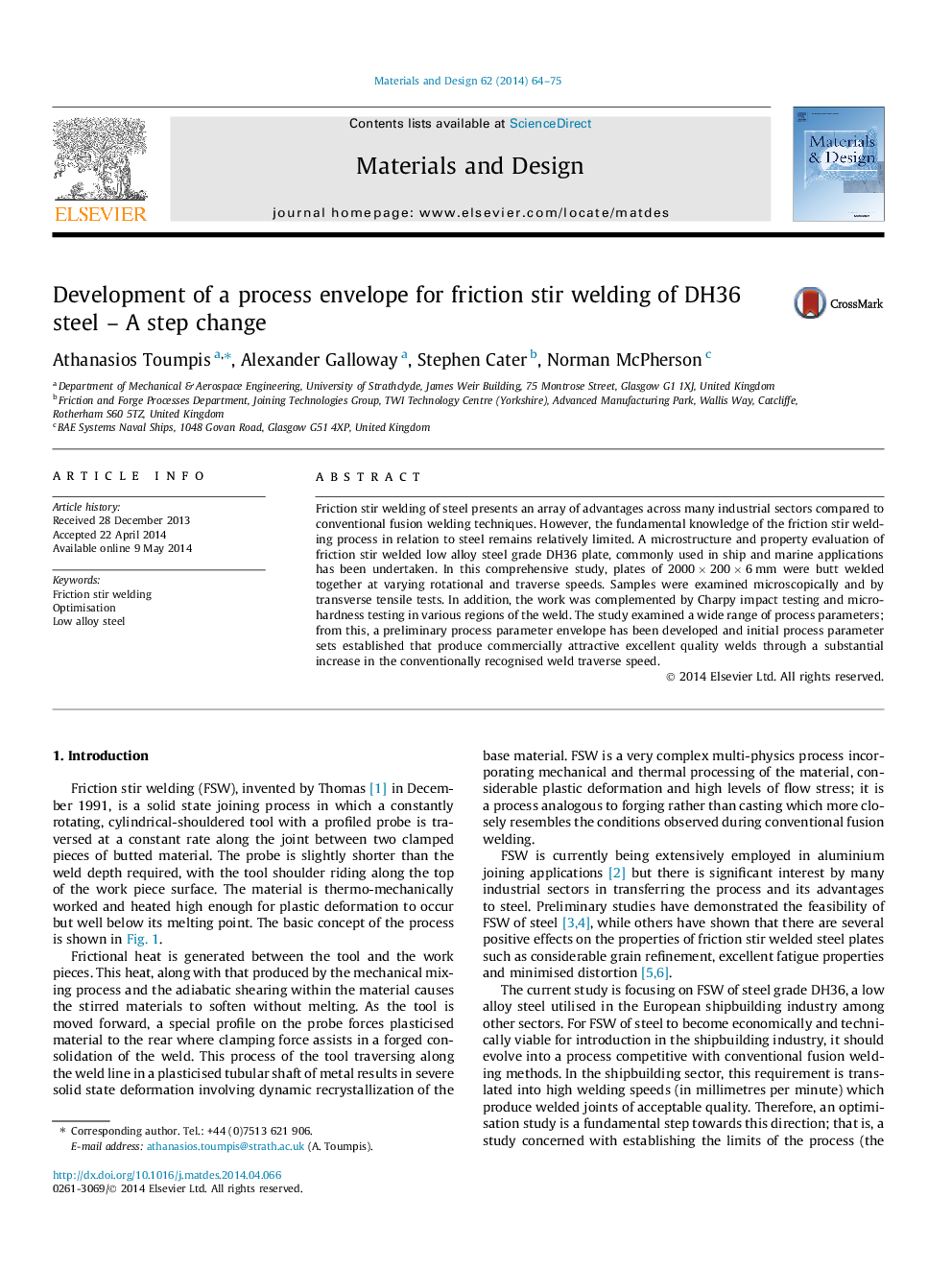| Article ID | Journal | Published Year | Pages | File Type |
|---|---|---|---|---|
| 829079 | Materials & Design (1980-2015) | 2014 | 12 Pages |
•The friction stir welding speed on DH36 steel has been substantially increased.•Excellent quality welds offering potential economic advantages are obtained.•Friction stir welding of steel generates a very complex metallurgical system.•Slow and intermediate welding speed tensile samples fractured in the parent material.•Increasing traverse speed is seen to improve the impact toughness of the weld.
Friction stir welding of steel presents an array of advantages across many industrial sectors compared to conventional fusion welding techniques. However, the fundamental knowledge of the friction stir welding process in relation to steel remains relatively limited. A microstructure and property evaluation of friction stir welded low alloy steel grade DH36 plate, commonly used in ship and marine applications has been undertaken. In this comprehensive study, plates of 2000 × 200 × 6 mm were butt welded together at varying rotational and traverse speeds. Samples were examined microscopically and by transverse tensile tests. In addition, the work was complemented by Charpy impact testing and micro-hardness testing in various regions of the weld. The study examined a wide range of process parameters; from this, a preliminary process parameter envelope has been developed and initial process parameter sets established that produce commercially attractive excellent quality welds through a substantial increase in the conventionally recognised weld traverse speed.
